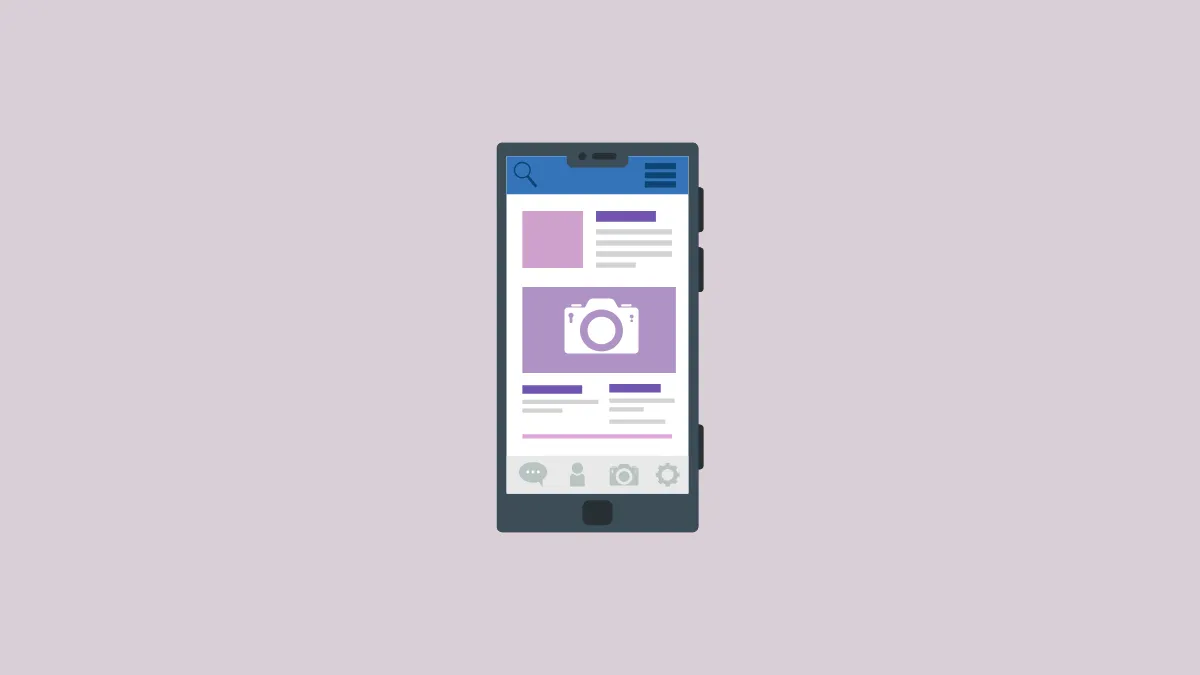With image editing tools becoming even more sophisticated, faking screenshots has become incredibly easy. This has also led to an increase in the number of scams taking place every day since not many people know how to spot a fake screenshot created by editing an image. This process is also known as photoshopping, due to Adobe's Photoshop being the industry standard among image editing tools.
However, nowadays there are lots of free online tools that allow you to edit images with minimal effort. That is why if you want to keep yourself protected from such scams, it is important to learn how to detect if a screenshot has been photoshopped.
Avoid trusting desktop shortcuts blindly
Desktop web browsers like Google Chrome and Mozilla Firefox allow you to edit the code of a webpage natively. This means you can alter an element of a page with very little effort using the 'Inspect Element' feature. You can access this by right-clicking on any webpage and then clicking on 'Inspect' in the menu.
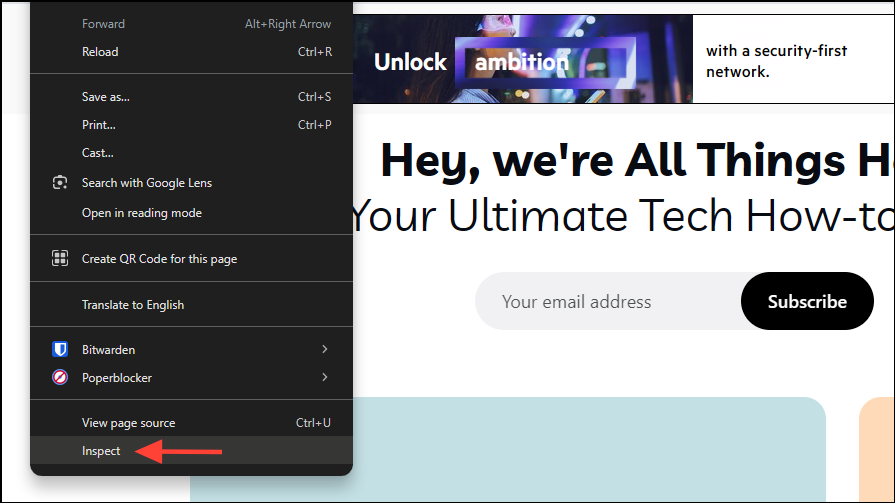
When you inspect a webpage, it will show you the Javascript, CSS, and HTML code making up the website. Anyone with even basic coding knowledge can edit the code and easily fake various aspects of the page. For instance, you can replace existing text on a website with any other text you want. While the edited webpage will revert to its original state when you reload the page, a person can edit the text and other elements on a website and take a screenshot for sharing with others.
If someone shares a screenshot of a website taken using a desktop browser, it is a good idea to visit the website yourself and check whether the screenshot matches what appears on the page. Alternatively, you can ask the person sharing the screenshot to refresh the page on video, but that can also be spoofed. Compared to desktop screenshots, it is easier to detect when someone has edited a screenshot taken on a smartphone but you can also use Image Forensics tools for this purpose. That said, it is easier to fake screenshots on phones than on desktops.
Check for pixel inconsistencies
If someone edits a screenshot of a receipt, they will do so by copying from some other document and pasting in the edited one. When they do so, you will find that the pixels in the pasted part will differ from those in other parts of the document. To find discrepancies in such screenshots, pay attention to the dates and amounts. Try zooming in and then checking for inconsistencies in pixels around these. The area around these dates and amounts may lack sharpness and may be blurry. On the other hand, the resolution of an unedited screenshot will be the same everywhere. Additionally, check for subtle changes in shadows and weird color gradations that are telltale signs of a fake.
Inconsistency in spacing and fonts
Identifying the font used in a document is extremely difficult, even for highly skilled graphic designers. Because of this, a person editing a screenshot is often unable to find the exact matching font used in a document and has to rely on ones that closely match the original font.
For instance, phone apps usually do not use common fonts like Times New Roman and Arial, but forgers may use them when they cannot find the exact font. Similarly, they face challenges in determining the correct spacing and size for fonts, and you may find inconsistencies in the lettering of the text in the screenshot. This is another indication that it is fake.
Presence of weird out-of-place elements
This one is easier for phone apps than for desktop screenshots. Developers update their apps frequently, implementing subtle design changes that are hard to mimic. A photoshopped screenshot from such an app may have elements from both older and newer designs, which can be easy to spot if you use the app regularly and are familiar with how it appears.
Perform a reverse image search
In many cases, a person editing a screenshot first downloads it from the internet. This makes it easy to check whether the image has been photoshopped or not by performing a reverse image search. You can rely on Google Images and TinEye. Simply upload the screenshot to these platforms and you should be able to find the original, unedited screenshot if it is available online.
Take a look at the Metadata
The metadata of an image contains all the information related to it, such as the time it was taken and which device was used to capture the image. When you take a screenshot using a smartphone, the name of the device is often included in the metadata. If someone edits a screenshot, this metadata is removed. If you suspect an image has been photoshopped, take a look at its metadata.
- On Windows, right-click on the image and then select 'Properties'.
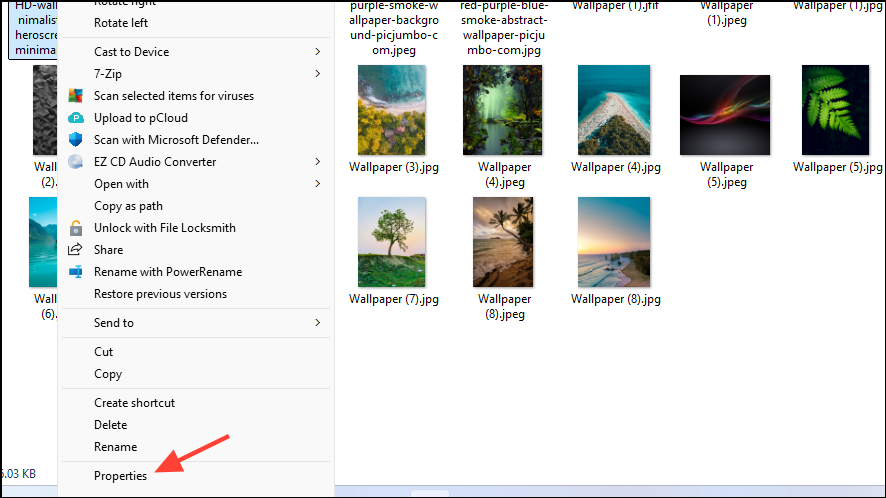
- Once the Properties dialog box appears, click on the 'Details' tab.
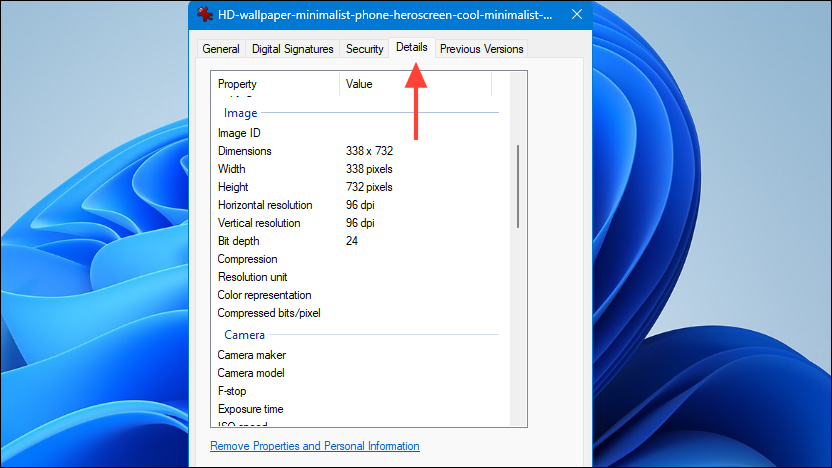
Take advantage of image forensic analysis tools
There are lots of forensic tools you can use to determine whether a screenshot has been photoshopped, such as Forensically. This tool can analyze images in detail and provide you with heatmaps showing where edits have been made in an image.
- To use Forensically, head to the website and you will see a sample image of a UFO hovering over a city. Move your cursor over the UFO and you will see that the pixels don't appear as in the rest of the image.
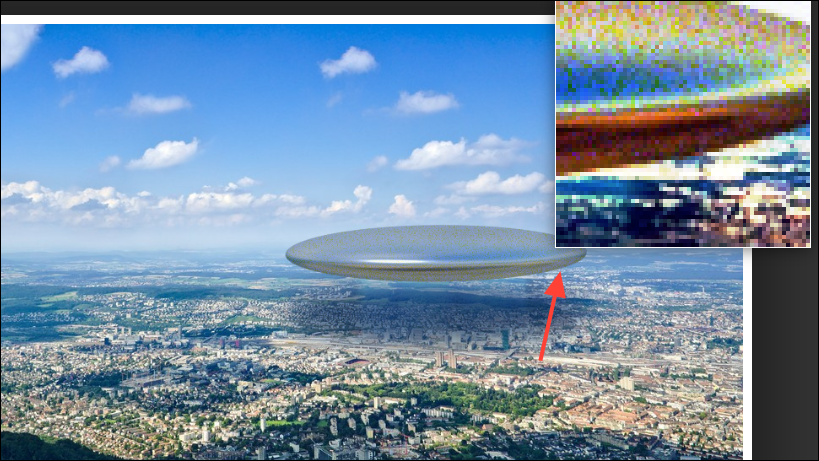
- Now, click on 'Error Level Analysis' on the right.
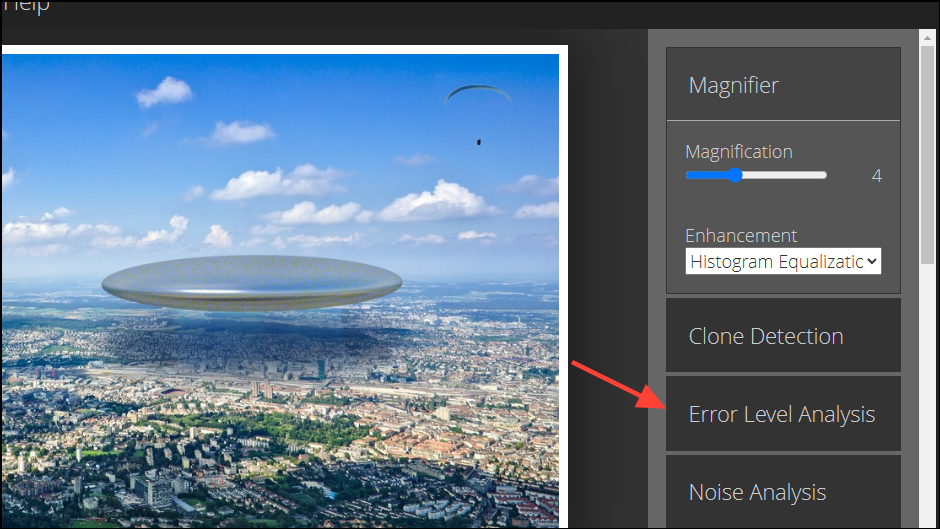
- You will see that the UFO and its shadow will appear in a completely different color compared to the rest of the image. Fake elements will always appear in this manner.
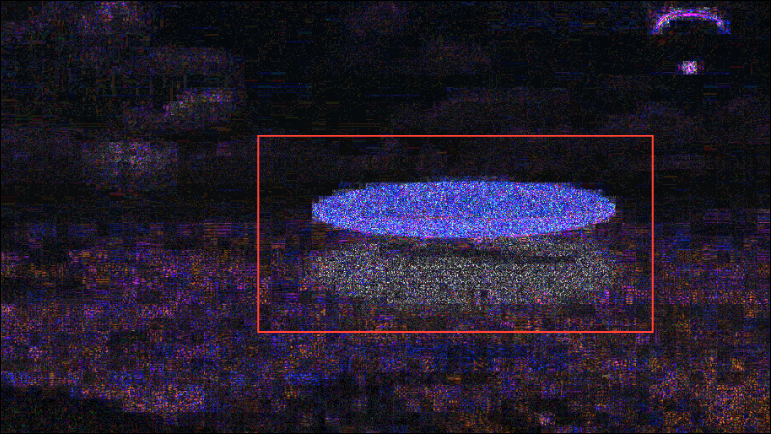
4, You can also use 'Clone Detection' by selecting it from the right. This will show you areas with identical pixels in the image.
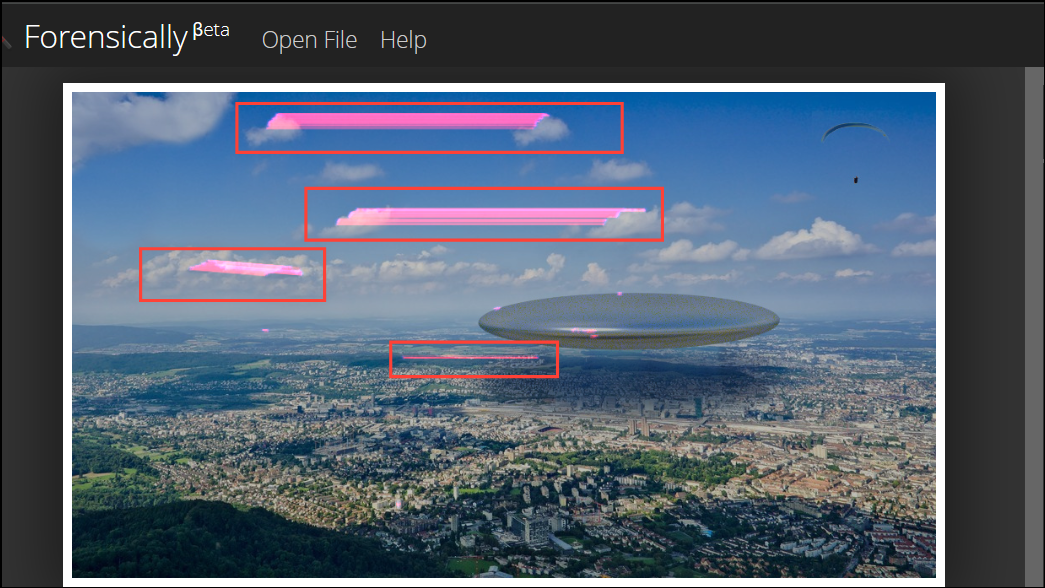
- You can also try out 'Level Sweep' and 'Principal Component Analysis' to find sections of the image that have been edited and search for tiny details. You can also try out the other more advanced options if you wish. The 'Thumbnail Analysis' tool can help you extract the original, unedited thumbnail of the image.
Things to know
- You can also find several image forensic analysis tools for smartphones, such as Mirage, which can help you check screenshots on your phone.
- Users with advanced technical knowledge can also check the JPG compression quality level of a screenshot, which can detect even a very slight change in an image. However, this method may not be suitable for more casual users.
- Edited screenshots often contain elements with blurry or pixelated borders, which can show where an element has been changed. You can zoom in to check for this but keep in mind that this is not a foolproof method to detect photoshopped screenshots.
- Tiny details like incorrect orientation, warped elements, unrealistic reflections, inconsistent lighting, and repeated patterns are all signs that an image has been edited. Keep a look out for these if you suspect that a screenshot has been photoshopped.

